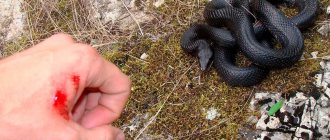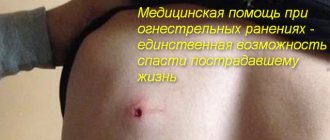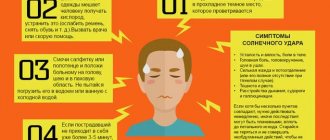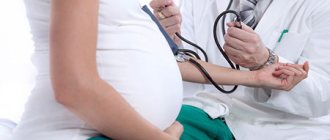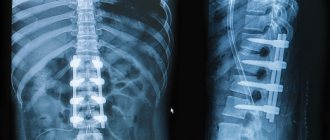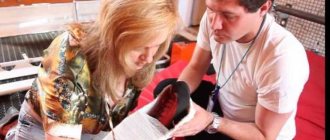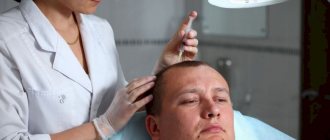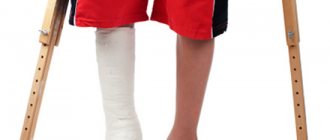Bruise is the most common type of injury, familiar to everyone since childhood. When an impact or fall occurs, soft tissues are damaged, as a result of which the sore spot turns red, and then a hematoma develops, or as it is popularly called a “bruise.” A small bruise passes without consequences, but the situation is much more serious when the head or neck is injured, a bruised wound with a fracture occurs.
Degrees of bruises
Based on the severity of the injuries received, the following degrees of severity of bruises can be distinguished:
- First. A mild wound of the first degree is characterized by mild injury to the epidermis (scratches, abrasions). A small bruise may occur. A painless bruise does not require medical intervention and heals completely within 2-5 days.
- Second. When second degree injuries occur, the integrity of muscle tissue is compromised. The part of the body that was hit swells, and a hematoma often forms. The patient experiences acute pain and other unpleasant sensations.
- Third. Third degree injury is characterized by damage to ligaments, tendons and muscles. Often, with strong mechanical impact, a bruise is accompanied by dislocation and noticeable pain symptoms.
- Fourth. Severe fourth degree soft tissue injury is characterized by long-term persistent pain, severe swelling, disruption of the body’s vital functions, and changes in the functioning of internal organs and human systems. May be accompanied by a dislocation or fracture. Treatment for this type of bruise should be carried out by a specialist in a hospital setting.
Correctly treating children's injuries
Children are often injured due to high activity. Roller skating, cycling and swinging, even simple outdoor games are accompanied by falls and, as a result, injuries, sprains, hematomas and abrasions. To provide first aid for a bruise, it is advisable to keep several proven means and dressings in your first aid kit.
Minor injuries bother you for a few minutes, and then the child continues to actively have fun. To ensure that infection in an abrasion on a bruised knee or elbow does not cause inflammation, proper treatment is required. A special self-fixing bandage will protect the damage from additional mechanical impact and penetration of pathogens.
If the bruise is accompanied by an abrasion, an antibacterial sterile adhesive bandage or a bright patch with pictures will do. The central section of the bandage and plaster is impregnated with special compounds that promote rapid healing and absorption of oozing fluid from the wound surface.
For very painful bruises, first aid is provided with a hydrocolloid patch. It will relieve pain and promote wound healing by creating an optimal environment. The material absorbs discharge from a bruised wound and protects against infections. After dressing, you can go to a medical facility.
Signs of bruise
The distinctive symptoms of this type of injury are:
- severe acute, moderate throbbing or slight aching pain at the site of impact (if the head is damaged, a lump may form);
- the appearance of a bruise, bruise or hematoma;
- traumatic edema and swelling;
- change in color of the epidermis.
First aid methods depend on the location of the injury, the severity of the injuries and associated injuries.
Symptoms
General signs of a bruise are some swelling of the injured area, with obvious damage:
- Skin;
- Subcutaneous tissue;
- Muscle
Without any serious damage to the structural part of tissues and organs.
The symptoms of a bruise are caused by intense pain and swelling in the area of impact. With characteristic short-term pain in the bruised area, which intensifies as swelling in the area of impact increases due to compression of the nerve endings.
The pain can last for weeks or even months, depending on the location of the injury.
Common signs:
- Manifestations and development of hematomas with bruising (subcutaneous hemorrhage formed due to ruptures of blood vessels);
- Limited movements;
- Complete disruption of the functioning of the damaged area of the body.
For example, a severely bruised joint limits and makes movement in it impossible, and an eye damaged in this way may stop seeing.
What to do if you are seriously injured
Providing first aid for severe bruises should be aimed at relieving pain and helping to eliminate the occurrence of subsequent complications.
After receiving an injury, you should immediately call an ambulance. Before the medical team arrives, the victim must be placed on a horizontal surface and kept at rest. After the initial examination, the affected part of the body should be doused with cold water, the wound should be disinfected and an ice compress should be applied. Instead of ice, you can use any cold items, such as frozen foods. Such actions will produce an anesthetic effect and limit the spread of hematoma and edema. In addition, applying cold localizes subcutaneous hemorrhages, which, if not treated promptly, can cause blood clots.
These manipulations are sufficient to provide first aid for grade 4 injuries. Qualified doctors, after conducting the necessary examinations, will be able to determine the presence or absence of associated complications and prescribe further treatment.
General recommendations for filling a first aid kit
In order for first aid for a severe bruise to be effective, you need to have several effective medical devices and tools on hand. The first step is to quickly get rid of swelling and normalize the flow of blood and lymph. For this purpose, there are compression elastic bandages that do not cause skin irritation. Manufacturers produce products with a cooling effect. This option is much safer than applying ice, since it does not cause frostbite to the tissue and at the same time provides cooling of the bruised area for 2 hours.
In addition to an elastic bandage, it is advisable to have in your first aid kit:
- antiseptic liquid or spray;
- hemostatic agent;
- ointments for bruises and sprains;
- atraumatic ointment dressings;
- sterile gauze or self-adhesive dressings;
- self-fixing bandage.
This list is especially relevant for families with children, since children are often injured. Proper use of special tools will reduce pain and speed up recovery. If the bruise is accompanied by a serious hematoma, deep wound and dangerous injuries, you should immediately consult a doctor. You can handle minor abrasions and bruises on your own.
How to provide first aid for a bruise
First aid rules for mild bruises:
- Lay the patient down and carefully examine the bruised area. Raise the injured limb by slipping a homemade cushion.
- Wash the wound with hydrogen peroxide, immobilize the limb and apply a cold object to the affected area; hold for 10-15 minutes. As it heats up, change the lotions. If necessary, give the patient an anesthetic drug.
- After the acute period, carry out active warming procedures. They will help reduce swelling and speed up the resorption of the hematoma. You can take a warm bath or make alcohol compresses. It is also recommended to use special medicinal gels and ointments, which should be applied with light movements to the affected area no more than 3-4 times a day, and then apply a bandage.
First aid for bruises may include the use of natural remedies that have an anti-inflammatory or disinfectant effect. These include:
- bodyagi leaves;
- fresh potato wedges;
- onion juice;
- garlic vinegar solution;
- sagebrush;
- Oak bark;
- plantain;
- Apple vinegar;
- arnica tincture in alcohol;
- cabbage leaves;
- aloe juice, etc.
Adherents of alternative medicine advise using these folk products carefully to avoid an allergic reaction.
If the pain is long-term, the victim should seek advice from a specialist. The doctor will help you choose the appropriate medications. In addition, at the discretion of the therapist, a course of physical therapy can be prescribed using special magnets, UHF devices and other devices.
Signs of damage
Bruises occur when you hit a hard, blunt object during a fall. The peculiarity of the injury is that it is closed, that is, the skin remains intact, but vascular ruptures occur under the skin and in the underlying tissues, hemorrhage or hematoma is formed - a limited accumulation of blood.
At the same moment, hemorrhage occurs in the tissue; its first sign is a red spot on the skin, which after a few hours begins to turn purple, and after 3 days it becomes blue. These signs concern soft tissues located under the skin, but deeper tissues - bones, joints, internal organs - can also be bruised. Such damage is dangerous and difficult to recognize externally.
Treatment of a joint bruise
Traditional medicine offers the following remedies for joint bruises:
- Onion. We break 1-2 heads in a blender, add powder from dry plantain leaves and a spoonful of natural honey into the resulting slurry. We place the ointment on the tissue, which we apply to the sore joint. Keep the product on the affected area for 2-4 hours;
- Thirty grams of wormwood powder are diluted with two glasses of vodka. Place the tincture in a dark place for six days, then soak a bandage in the product and apply it to the bruise.
How to distinguish a bruise from a fracture
By external signs, a bruise can be distinguished from a fracture if there is displacement of the fragments. If this is a limb, then it will be deformed during a fracture, and there may be shortening. At the site of damage, upon palpation, crepitus is detected - crunching of fragments.
A distinctive feature is also a sharp limitation of movements and muscle spasms. If you lightly press the arm or leg along the axis, the pain in the area of the fracture sharply increases, which does not happen with bruises. However, if the fracture is not displaced or there is a crack in the bone, then it is difficult to externally distinguish it from a bruise.
It is easier to distinguish a chest bruise from rib fractures. With fractures, pain is pronounced and crepitus of the rib is determined - a crunching sensation when palpated and breathing movements.
In children, both deformity and crepitus may often be absent during fractures. These are the so-called greenstick fractures, when the bone is damaged, but the periosteum covering it remains intact. In children it is thicker and more elastic than in adults, this should be remembered.
What is a bruise
Injury to soft tissues with preservation of the integrity of the skin, resulting from a mechanical shock. This is how the term “bruise” is deciphered in medicine. The impact can occur accidentally and be caused by some object. The result of its direct impact and kinetic energy is damage to tissue cells. With such an injury, the skin, vascular network and subcutaneous fat take the entire blow, in which a local reaction to the traumatic reagent is triggered.
Head contusion
After a blow, a clearly localized swelling may appear on the head - a bump that should not be ignored. It is necessary not only to pay attention to the condition of the lump, but also to the presence/absence of nausea and vomiting, loss of consciousness. Such symptoms will indicate a concussion, which, if left untreated, can result in serious consequences.
First aid for head injury
If the victim briefly loses consciousness or experiences dizziness, then it is necessary to urgently consult a doctor. In all other cases, first aid for the injury in question comes down to the following measures:
- put the patient to bed;
- provide him with absolute peace, shade the windows;
- Ice should be applied to the bruise site, but for no more than 15 minutes within an hour;
- Closely monitor the victim’s condition and, if it worsens, call an ambulance.
Treatment of head contusion
If the type of injury in question is not accompanied by a concussion (and this will be clear literally in the first hours), then on the second day after the injury you can use an ointment based on the herb comfrey (it is sold in pharmacies), as well as heparin ointment, Troxevasin - they treat the bump .
If, after a head injury, the victim is diagnosed with a concussion, then only the mildest degree of the disease can be treated on an outpatient basis.
In all other cases, the victim is placed in a medical facility and undergoes full-fledged therapy, which is selected on an individual basis. We recommend reading: Concussion: symptoms and treatment, first aid for a concussion
Erroneous actions when providing first aid
It is very important not to harm the person who has been injured. It is difficult to determine the severity of the condition at first glance, so let’s look at actions that are strictly forbidden to take, even if the damage seems minor:
- on the first day after injury, use products with a warming effect (ointments, compresses);
- do masses on the damaged part of the body;
- apply a tight bandage to the chest area;
- in case of a back injury, change the patient’s position, lift him, move him;
- take medications (especially analgesics) in case of injury to the abdomen, chest, or head;
- if the limbs are injured, their physical activity is prohibited until a fracture is excluded;
- In case of eye bruises, help is provided without washing them without consulting a doctor.
In case of bruises of soft tissues and internal organs, medical treatment is possible using a number of drugs (anti-inflammatory, heparin-containing, vasodilators, painkillers, enzymes), but they should be taken only after a doctor’s prescription. The main thing to remember: self-medication is only possible if serious damage is excluded. If any alarming symptoms occur, the only right decision is to call an ambulance.
When a doctor's help is needed
- if a soft tissue injury occurs in the head area, you must urgently go to the emergency room or call an ambulance, since a traumatic brain injury could occur as a result of the injury; Usually, patients with head injuries must be examined by a neurologist after providing first aid to the head, because esudate (fluid) sometimes accumulates under the skin of an injured person: to treat bruises of this condition, surgery may be required;
- if the injury occurred in the chest area, and as a result of the bruise a fracture of the ribs occurred, the patient should not be laid down so that his internal organs do not suffer from damage from broken bones;
- if there is a bruise in the abdomen: in such cases, damage to internal organs is possible, the main symptoms of which are nausea (vomiting), pallor, sudden changes in heart rhythms; in this case, you should urgently call an ambulance;
- if the spine is injured, the patient cannot be moved or moved, it is better to wait for the ambulance to arrive; If a darkened and swollen hematoma quickly appears at the site of the injury, the victim may require urgent surgery.
